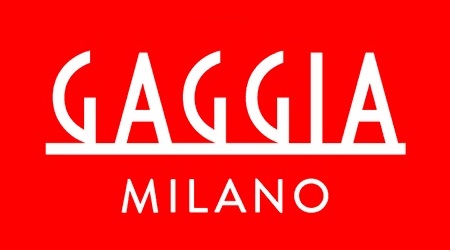
It was one man’s determined quest for the perfect espresso in the 1930s Milan that gave birth to one of Italy’s most iconic brands. For more than half a century, Gaggia has been supplying both bars and homes with innovative, state-of-the-art coffee machines.
Year after year, Gaggia created beautiful, timeless products inspired by the fashion, design and culture of the day, as well as the Italian passion for “La Dolce Vita”.
Today, as yesterday, Gaggia’s mission remains the same: to spread the tradition of Italian Espresso around the world. These values of tradition and professionalism can be found in all of Gaggia’s machines. From the unique “crema naturale” layer to the crème de la crème of espresso machines, discover more about our rich history here.
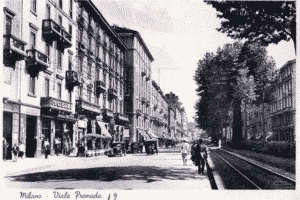 1930
1930 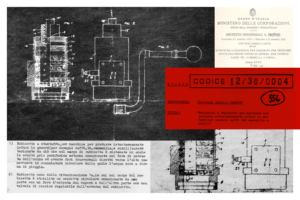 1936
1936 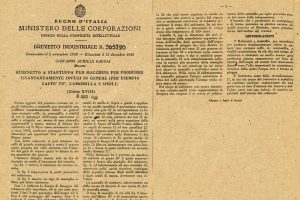 1938
1938 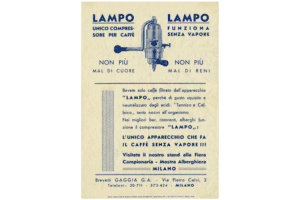 1939
1939 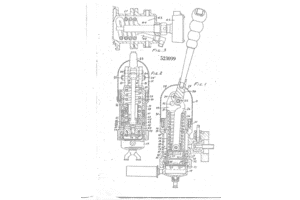 1947
1947 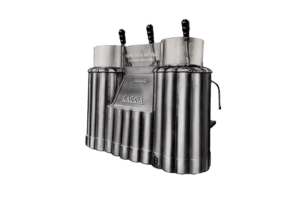 1948
1948 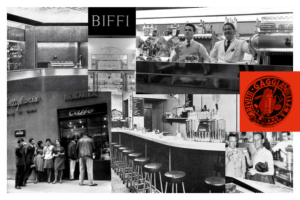 1949
1949 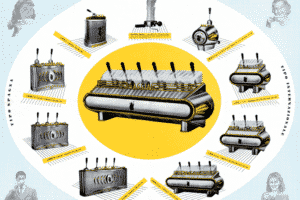 1950
1950 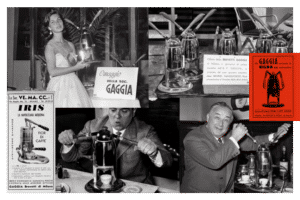 1952
1952 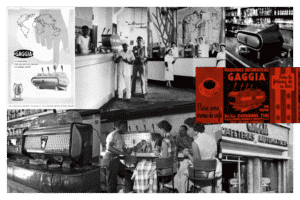 1955
1955 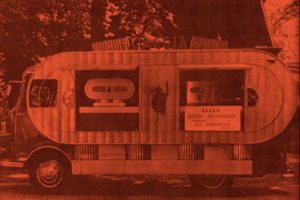 1956
1956 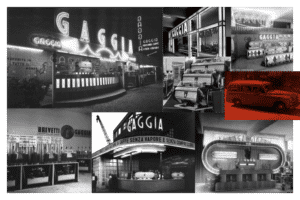 1957
1957 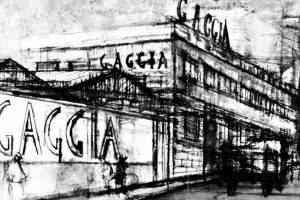 1961
1961 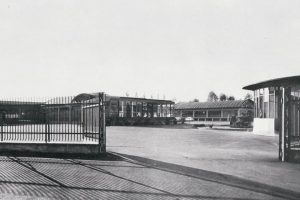 1962
1962 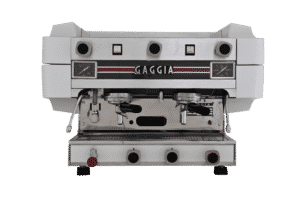 1968
1968 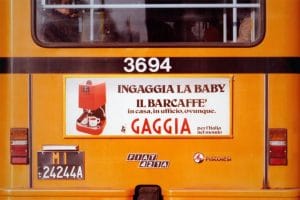 1977
1977 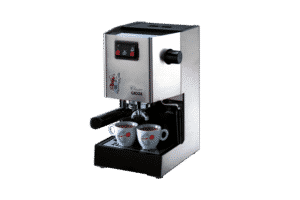 1991
1991 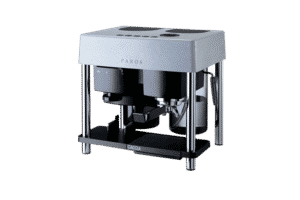 1993
1993 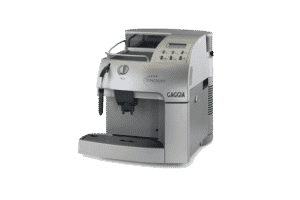 1999
1999 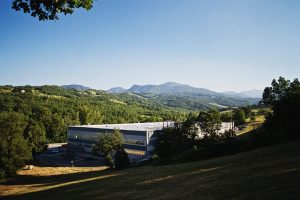 2007
2007 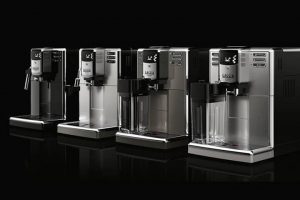 2009
2009 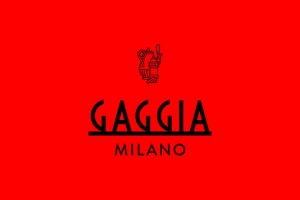 2013
2013 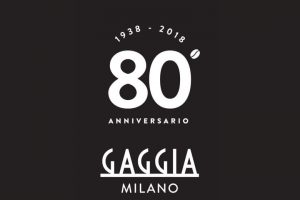 2018
2018 1930

Thanks to the meeting with the engineer Antonio Cremonese, who shared his same desire to improve coffee extraction, Achille was able to refine his studies and invented the “a torchio” system (renamed “Lampo”). It definitely abandoned the use of steam and, finally, baristas could control accurately the process by which hot water under pressure passed through ground coffee.
1936

Thanks to the meeting with the engineer Antonio Cremonese, who shared his same desire to improve coffee extraction, Achille was able to refine his studies and invented the “a torchio” system (renamed “Lampo”). It definitely abandoned the use of steam and, finally, baristas could control accurately the process by which hot water under pressure passed through ground coffee.
1938
On Sept. 5, 1938, Achille filed the patent no. 365726 for “Lampo”. This disruptive mechanism used hot water pressure instead of steam and prepared a delicious espresso, characterized by a soft layer of “crema naturale”. A true revolution! This moment marks the beginning of the modern era of espresso.
1939
To promote the new dispensing group for coffee crema, Gaggia exhibited “Lampo” at the 1939 Fiera Campionaria (Samples Fair) in Milan. Achille’s aim was to sell the new groups to the bars owners, to substitute the ones on old coffee machines. Unfortunately, the idea was not easy to implement: the only solution was to produce coffee machines that already carried that innovative system.
1947

Achille Gaggia registered his second patent, for a lever-piston brewing mechanism. The legend says that this idea came up to his mind after seeing the piston engine of an American Army’s jeep that used a hydraulic system. The new patent implied a spring, loaded by a lever, that pushed the piston through the filter: in this way hot water at high pressure passed through ground coffee, extracting all its marvelous aromas. The barista could obtain a creamy and flavorful espresso in just 25-30 seconds, and the mass production of the patent was just around the corner…
1948
 Achille Gaggia, in collaboration with the entrepreneur Carlo Ernesto Valente, founded “Officine Faema Brevetti Gaggia”, and could produce his first espresso machine: Tipo Classica. It was a technological and aesthetical revolution: horizontally developed, with beautiful levers, unmistakable slogan and logo, and a shape that allowed the set of more than one group in a row. The barista became a real artist, moving levers as a true stage performer.
Achille Gaggia, in collaboration with the entrepreneur Carlo Ernesto Valente, founded “Officine Faema Brevetti Gaggia”, and could produce his first espresso machine: Tipo Classica. It was a technological and aesthetical revolution: horizontally developed, with beautiful levers, unmistakable slogan and logo, and a shape that allowed the set of more than one group in a row. The barista became a real artist, moving levers as a true stage performer.
1949
 The Gaggia espresso is unique: the patented mechanism extracts the natural coffee oils and makes a delicious creamy layer on the top of the drink. Soon Gaggia installed his machines in the most elegant milanese bars, such as Motta and Biffi, with some appealing big billboards hanged on their windows, reporting “Crema caffè di caffè naturale”. The trend of espresso began…
The Gaggia espresso is unique: the patented mechanism extracts the natural coffee oils and makes a delicious creamy layer on the top of the drink. Soon Gaggia installed his machines in the most elegant milanese bars, such as Motta and Biffi, with some appealing big billboards hanged on their windows, reporting “Crema caffè di caffè naturale”. The trend of espresso began…
1950

Supported by the engineer Armando Migliorini, Achille designed and produced various ranges such as mod. Esportazione, Internazionale, Spagna and Treno, all characterized by elegant lines and impactful design. For the first time, the barista faced the clients while preparing espresso, and the back of the machines represented a new way to communicate with customers. Already brilliantly marketing-oriented, Achille took the opportunity and was the first to place right there his unique slogan “Crema caffè naturale – Funziona senza vapore”.
1952

After various studies focused on a way to offer the same espresso of the bars in the comfort of the house, Gaggia launched its first coffee machine for domestic use: Gilda. Entirely and meticulously handcrafted, activated by piston pressure, it owes its name – as the legend says – to Rita Hayworth’s iconic interpretation of “Gilda” (1946).
After this model, came the variation “Tipo-Iris” and the famous and unforgettable “Tipo-Gilda 54”, named “rabbit’s ears”
1955

The worldwide diffusion of espresso machines begins. The magic London is the first stage When coffee was often made from chicory and essences, Gaggia was the protagonist of a true revolution. At the famous “Moka Bar” – inaugurated by Gina Lollobrigida – “Bar Italia”, “Sirocci Bar”, “El Cubano” and “The French House”, Gaggia machines gleamed on counters and served even 1000 people a day. The innovative “espressos with crema naturale” and cappuccinos delighted youngsters, as well as the most known writers, authors and actors.
1956

Gaggia is a real cult brand. The Danish catering company “Oluf Brønnum” created a “Mobile Canteen” with the exact same shape of Gaggia “Tipo Internazionale”
1957
 Thanks to many Italians who emigrated, the espresso culture reached Africa, America and Australia. In Milan, Gaggia launched “Tipo-America”, designed to perfect the efficiency of the lever system. Later came “Autono-Matic” with revolutionary hydraulically operating groups that gradually substituted the lever, making the brewing of espresso easier.
Thanks to many Italians who emigrated, the espresso culture reached Africa, America and Australia. In Milan, Gaggia launched “Tipo-America”, designed to perfect the efficiency of the lever system. Later came “Autono-Matic” with revolutionary hydraulically operating groups that gradually substituted the lever, making the brewing of espresso easier.
1961

1962

The high success achieved by the company led the decision to transfer the production to larger buildings to answer the growing worldwide needs: “Gaggia S.p.A.” opened in Robecco Sul Naviglio (Milan).
1968
 Design and research on materials became every day more important, and Gaggia started collaborating with designers, experimenting lines and combinations. The first project of this kind is “Tel 70”, created with Giuseppe de Gotzen. It was available in different colors, with a die-cast Silumin bodywork, a horizontal heat exchanger and two shells crossed by a neon tube. Another collaboration with de Gotzen was for “Modello 80” launched in 1975.
Design and research on materials became every day more important, and Gaggia started collaborating with designers, experimenting lines and combinations. The first project of this kind is “Tel 70”, created with Giuseppe de Gotzen. It was available in different colors, with a die-cast Silumin bodywork, a horizontal heat exchanger and two shells crossed by a neon tube. Another collaboration with de Gotzen was for “Modello 80” launched in 1975.
1977

Gaggia’s desire to become a part of the daily life of families, by bringing to their houses the same espresso of the coffee bars, increased. The first model to be launched was “Duo”, but it was with the unforgettable “Baby Gaggia”, that the dream became true. Developed with the Japanese designer Makio Hasuike, it was the very first espresso machine to be mass produced. With a unique compact design and the high quality of its espresso, Baby Gaggia immediately entered the homes and hearts of the Italians, becoming a must have!
1980
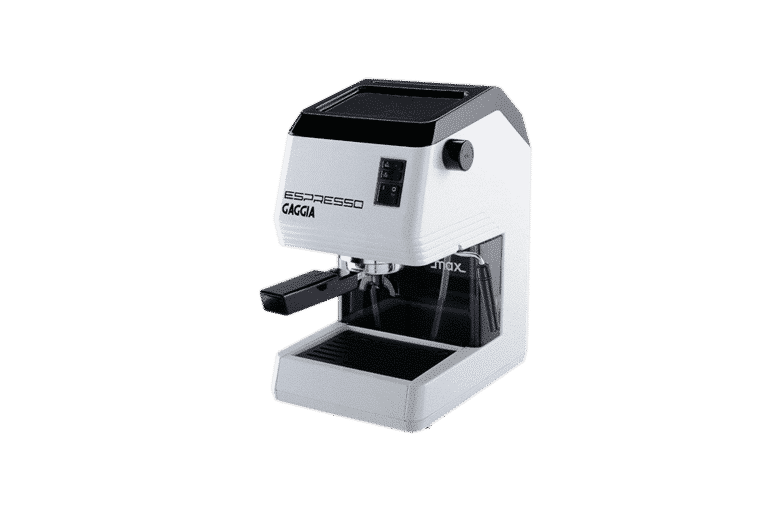
1991
 Gaggia presented to the market “Classic”. Characterized by a stainless steel body and bold lines, this domestic espresso machine perfectly combined Gaggia’s long professional tradition with a timeless design. Beloved all over the world since the beginning, Classic has always been a best selling symbol of the brand’s tradition, reliability and quality
Gaggia presented to the market “Classic”. Characterized by a stainless steel body and bold lines, this domestic espresso machine perfectly combined Gaggia’s long professional tradition with a timeless design. Beloved all over the world since the beginning, Classic has always been a best selling symbol of the brand’s tradition, reliability and quality
1993
 From this year, until 1998, Gaggia focused on enriching the product range and worked with various designers and architects to launch new models, all characterized by innovative aesthetics. Besides the manual machines “Paros” and “Carezza”, Gaggia created its first automatic espresso machine, “Automatica Gaggia”.
From this year, until 1998, Gaggia focused on enriching the product range and worked with various designers and architects to launch new models, all characterized by innovative aesthetics. Besides the manual machines “Paros” and “Carezza”, Gaggia created its first automatic espresso machine, “Automatica Gaggia”.
1999
 When the majority share of the group was acquired by Saeco, Gaggia could refine its offer of fully automatic espresso machines. The company launched “Syncrony Digital”, “Syncrony Logic”, “Titanium” and “Platinum”. The new era of domestic machines began: at the push of a button, it automatically grinds, tamps and brews an espresso directly in cup!
When the majority share of the group was acquired by Saeco, Gaggia could refine its offer of fully automatic espresso machines. The company launched “Syncrony Digital”, “Syncrony Logic”, “Titanium” and “Platinum”. The new era of domestic machines began: at the push of a button, it automatically grinds, tamps and brews an espresso directly in cup!
2007

2009

Another era starts when the majority share of Gaggia was sold, together with Saeco Group, to Royal Philips Electronics. The Dutch multinational recognized the company’s potential and operated consistent investments to develop the brand.
2013

On the occasion of the celebrations for the 75th Anniversary of Achille Gaggia’s patent, the Group renovates the product range and revamps the brand, with the aim to strengthen Gaggia’s competitive position in the market of domestic espresso machines. There is a come back to the historic logo GAGGIA MILANO, that underlines the strong bond with tradition and the company’s values and hometown. For what concerns the product portfolio, in the years Gaggia launches various new ranges.
2018

Just like before, 80 years after the filing of the famous patent, we work and design every day with passion, honoring a unique tradition for the love of the Italian espresso.
